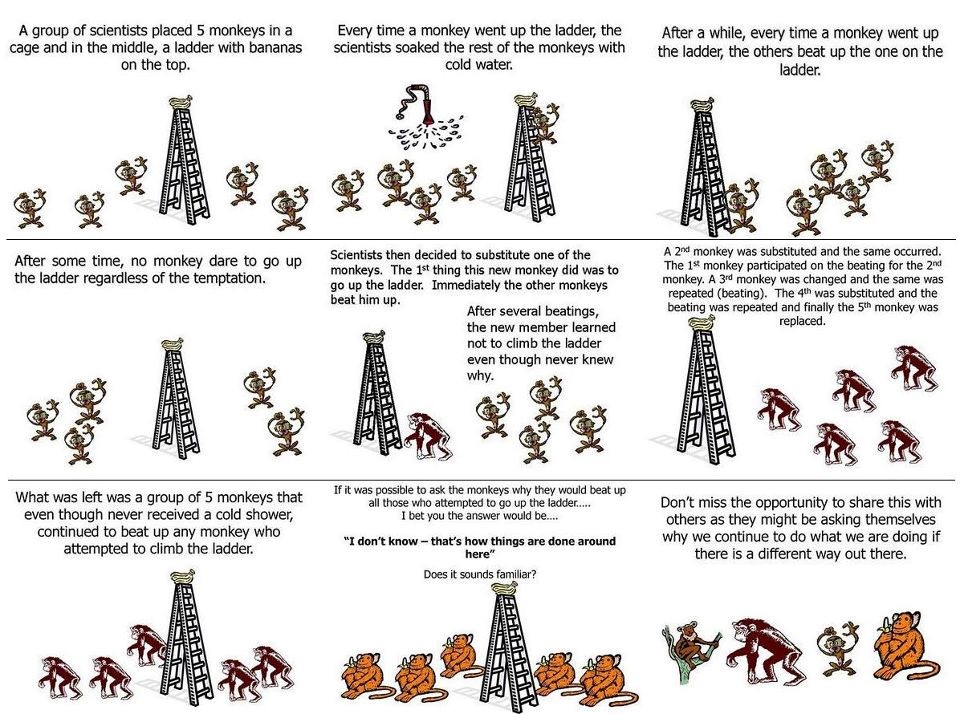You've probably heard this phrase before, most likely in a professional context, perhaps from a stakeholder or colleague. If you embrace and promote change, it can be frustrating, especially if it directly impacts business outcomes. Here I will offer my advice on what to do next time you have an encounter with this phrase.

What’s behind “we’ve always done it this way”?
There are many reasons as to why decision makers tend to hold onto this mindset. It's definitely in our human nature to stick within our comfort zone, but there are other factors involved.
Self-interest
One motivation to believe the business and processes are better the way they are now, could be self-interest. Being in a comfortable position of control makes people think there’s no better way to manage the situation. Perhaps there’s fear to lose power within the organization. After all, the approach managers use today tends to be a result of years of experience, and a transformation could diminish the relevance of that knowledge.
To explore more about how our brain works when making this type of decisions, I recommend this article from Didier Marlier ‘Fear of losing or fear of winning’.
Automatic pilot mode is on
Having habits helps people to organize themselves so they don’t need to make many decisions every single day. These habits simplify some processes and become a repetition of tasks and activities that contribute to the goal without the need to question the methodology or reasoning behind because all this was done previously. There’s nothing wrong with this behavior, the complications arrive when the repetition happens, without understanding the purpose.
A curious example to illustrate this issue is The Monkeys Experiment.

In the story, every new member of the group was forced to repeat the same behavior, but after some time no one could say why the monkeys were not allowed to get the banana. Even when the story doesn’t involve humans, we can clearly understand what happens when something is replicated without questioning before or understanding the analysis to do it in that specific way.
Change requires extra work
This is probably the most popular reason to continue with ‘how things have always been done’ without seeking many transformations. Change -at least at the beginning- means more work and energy, more time, more resources in general. It could even be a risk, what if implementing new changes ends up negatively impacting outcomes? In some cases, the new approach can represent minor changes, but in other cases, it could be a disruptive innovation transforming the core of the business.
What’s the best approach to address this mindset?
The good news is that there are concrete solutions to combating this sort of thinking which you can employ to help drive change in your organization.
Being persuasive
Change must be sold. We need a persuasive and well-supported pitch to get people involved. It might be crucial to find sponsors and get their commitment to the initiative, but we also need to be ready to meet with resistance. Explaining what’s in this change for each person/team can help to better understand the implications.
Having a plan
What will the implementation of this approach look like? What’s the estimated budget? What departments will be involved? How long it will take? When do we see results? What happens if it doesn’t work? Being ready to answer questions in a clear and very organized manner is key to demonstrate confidence and reassure stakeholders.
Communicating early and often
Nobody wants to be surprised by big changes, this could increase incertitude and the project could gain adversaries instead of allies. Real and honest communication at the right time will have a constructive impact.
Staying positive
Change takes time. It’s a decision, but it’s also a process. People will learn by doing and with the adequate training.
Experiential learning can accelerate the process and contribute to leadership development.
If at some point the panorama is not looking great, just remember the Kanter’s law: ‘Everything looks like a failure in the middle.’
If you are interested in knowing more about change management, innovation, and how StratX can help, please feel free to reach out, we’ll be happy to talk and share ideas.
Learn more about the factors that are propelling leaders to making changes in their management style.








